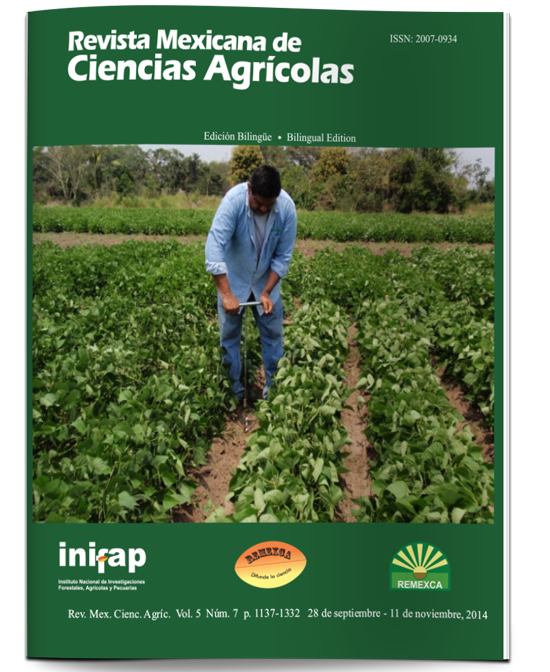Lettuce response to electrical conductivity with surface irrigation and sub-irrigation systems
DOI:
https://doi.org/10.29312/remexca.v5i7.868Keywords:
soilless crops, nutrition, salinity, stress toleranceAbstract
Salinity suppresses plant growth and reduce agricultural productivity due to a water deficit, ion toxicity, causing nutrient skewness. A sub-irrigation system on principle, is based on capillary rise of water, up to the root zone, decreasing nutrient leaching compared with traditional watering systems. In void areas of northern Mexico, there are often high levels of calcium (Ca), magnesium and sulphate in irrigation water, directly affecting the electrical conductivity (EC). This paper proposed to evaluate the effect of EC on the growth of lettuce plants using two types of irrigation systems: surface and sub-irrigation. The diameter of the plants was bigger in plants with surface irrigation system compared to those with sub-irrigation; however, plants sub-irrigated with solution 3.3 dS m-1 showed a higher fresh weight than those with surface irrigation, so this system is a good option to meliorate the effect of salinity. The rate of photosynthesis, transpiration and leaf conductance were not altered by the irrigation system at all, but transpiration and conductance were higher in sub-irrigated plants. A higher EC of the nutrient solution increased the bottom EC of the substrate, and the middle and top layer, and the surface irrigation system was higher compared to that presented by sub-irrigation. High EC of the nutrient solution did not attain the concentration of nitrogen or phosphorus whatsoever, but at elevated EC of the substance, the foliar potassium concentration did increased.
Downloads
Downloads
Published
How to Cite
Issue
Section
License
The authors who publish in Revista Mexicana de Ciencias Agrícolas accept the following conditions:
In accordance with copyright laws, Revista Mexicana de Ciencias Agrícolas recognizes and respects the authors’ moral right and ownership of property rights which will be transferred to the journal for dissemination in open access. Invariably, all the authors have to sign a letter of transfer of property rights and of originality of the article to Instituto Nacional de Investigaciones Forestales, Agrícolas y Pecuarias (INIFAP) [National Institute of Forestry, Agricultural and Livestock Research]. The author(s) must pay a fee for the reception of articles before proceeding to editorial review.
All the texts published by Revista Mexicana de Ciencias Agrícolas —with no exception— are distributed under a Creative Commons License Attribution-NonCommercial 4.0 International (CC BY-NC 4.0), which allows third parties to use the publication as long as the work’s authorship and its first publication in this journal are mentioned.
The author(s) can enter into independent and additional contractual agreements for the nonexclusive distribution of the version of the article published in Revista Mexicana de Ciencias Agrícolas (for example include it into an institutional repository or publish it in a book) as long as it is clearly and explicitly indicated that the work was published for the first time in Revista Mexicana de Ciencias Agrícolas.
For all the above, the authors shall send the Letter-transfer of Property Rights for the first publication duly filled in and signed by the author(s). This form must be sent as a PDF file to: revista_atm@yahoo.com.mx; cienciasagricola@inifap.gob.mx; remexca2017@gmail.
This work is licensed under a Creative Commons Attribution-Noncommercial 4.0 International license.



